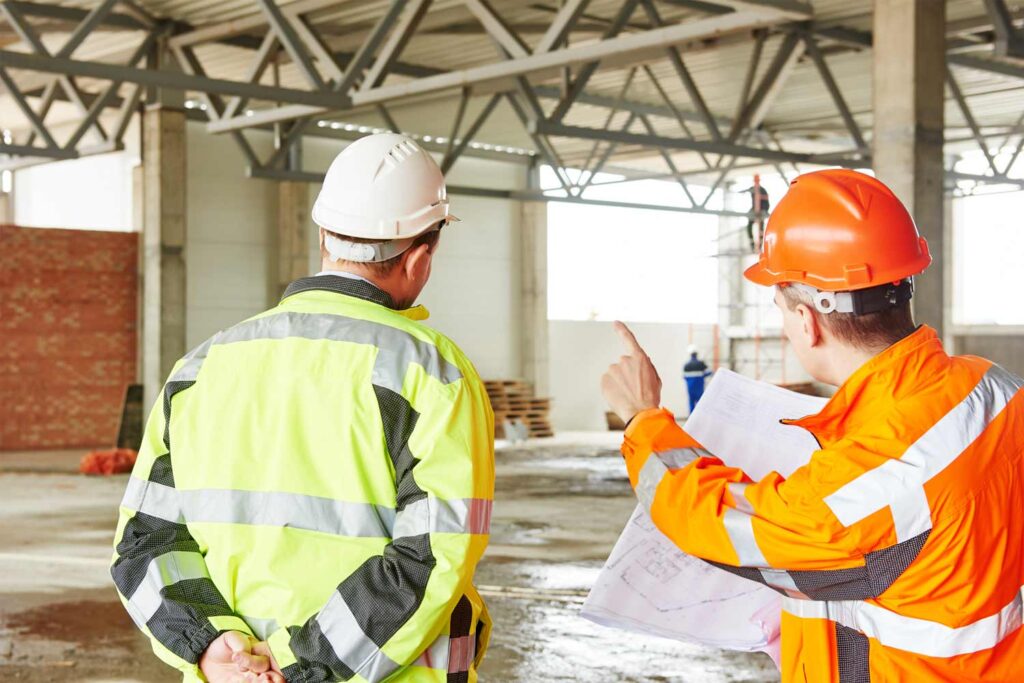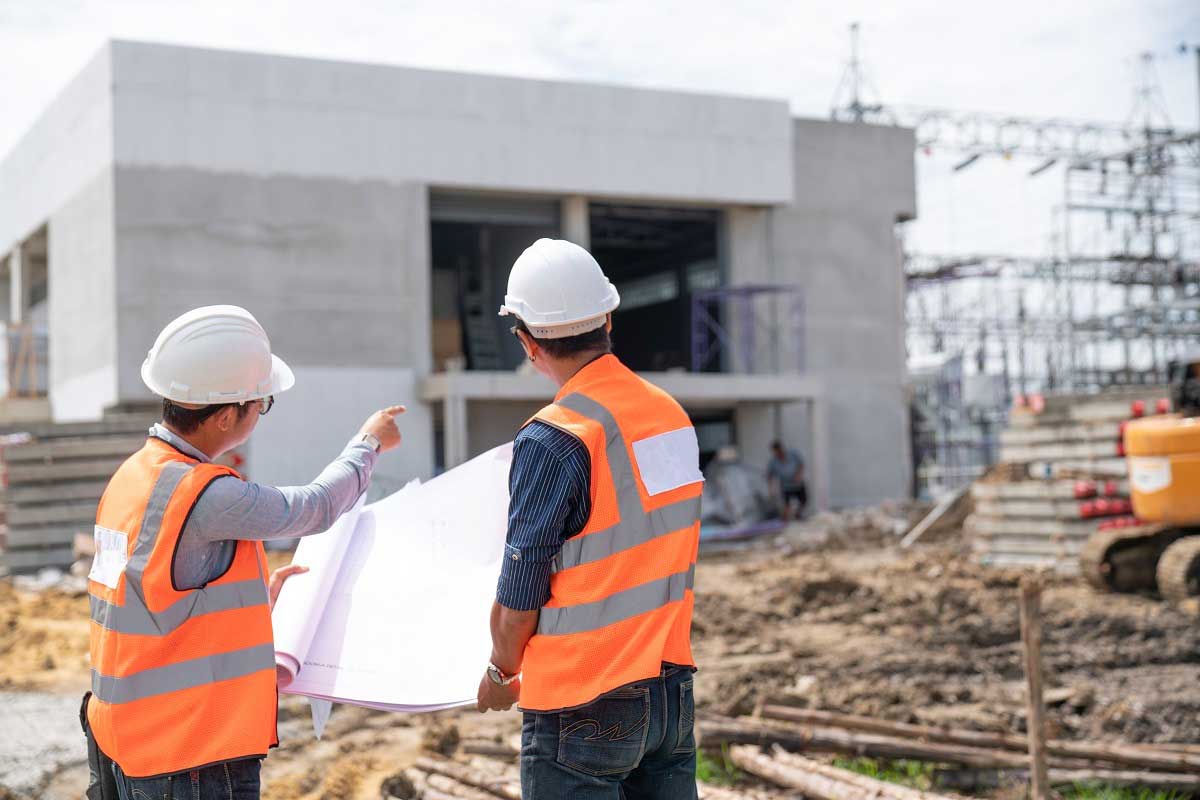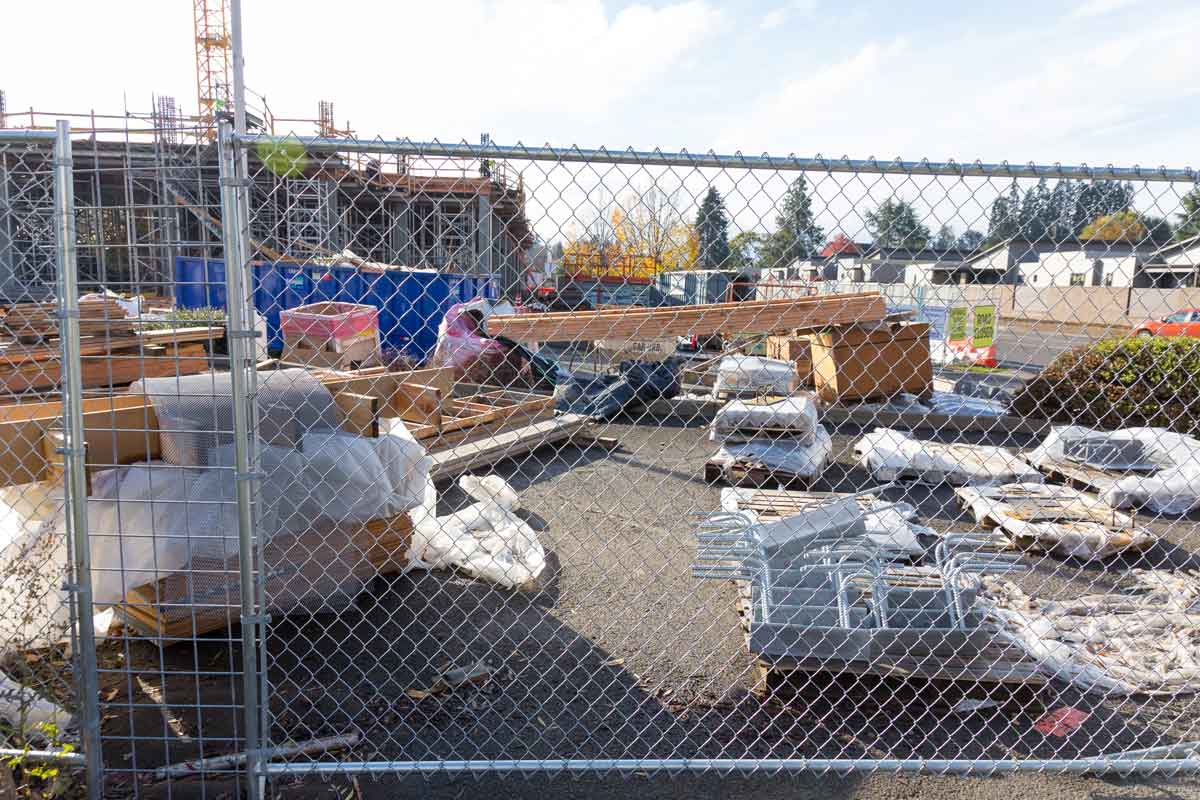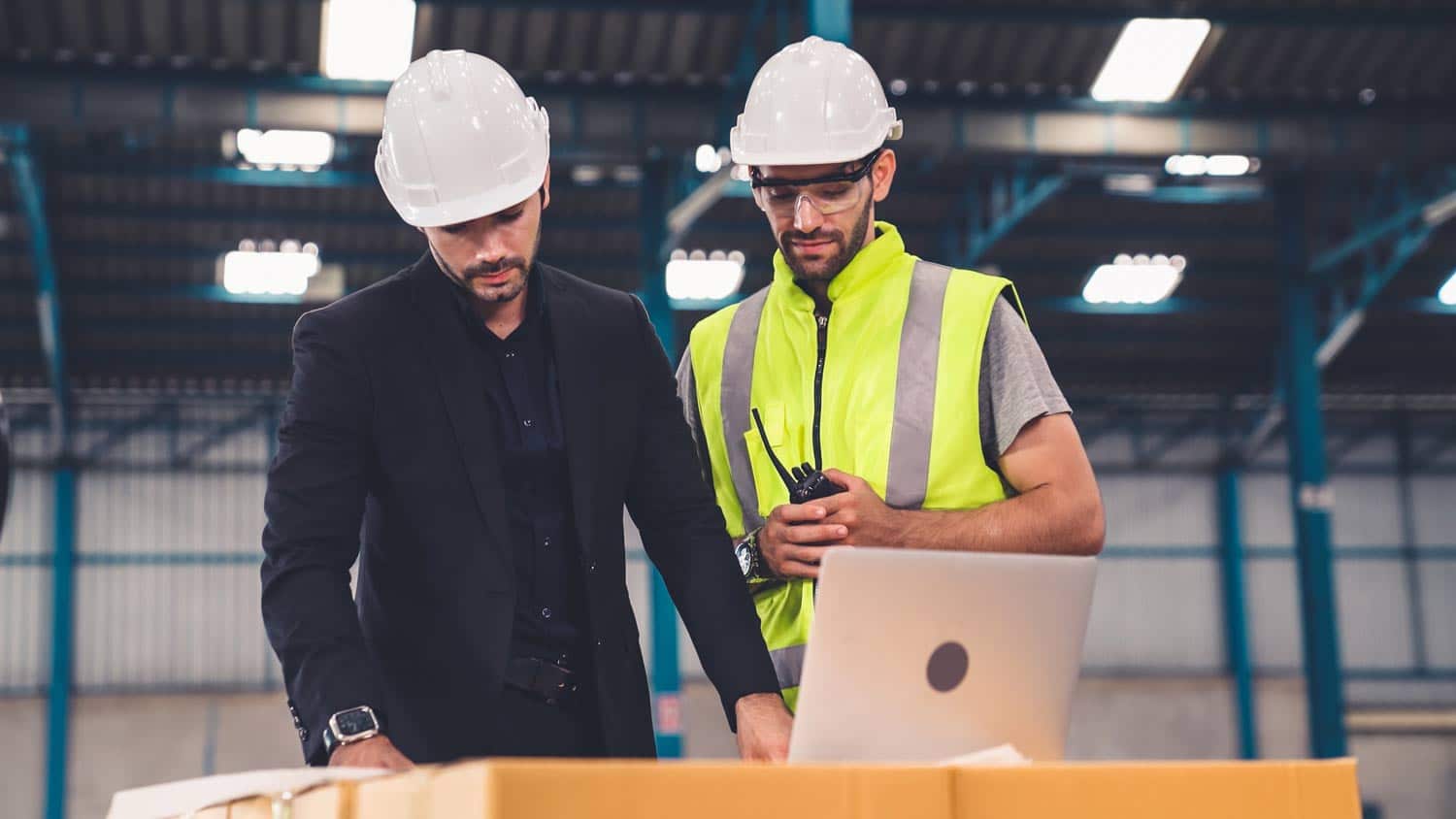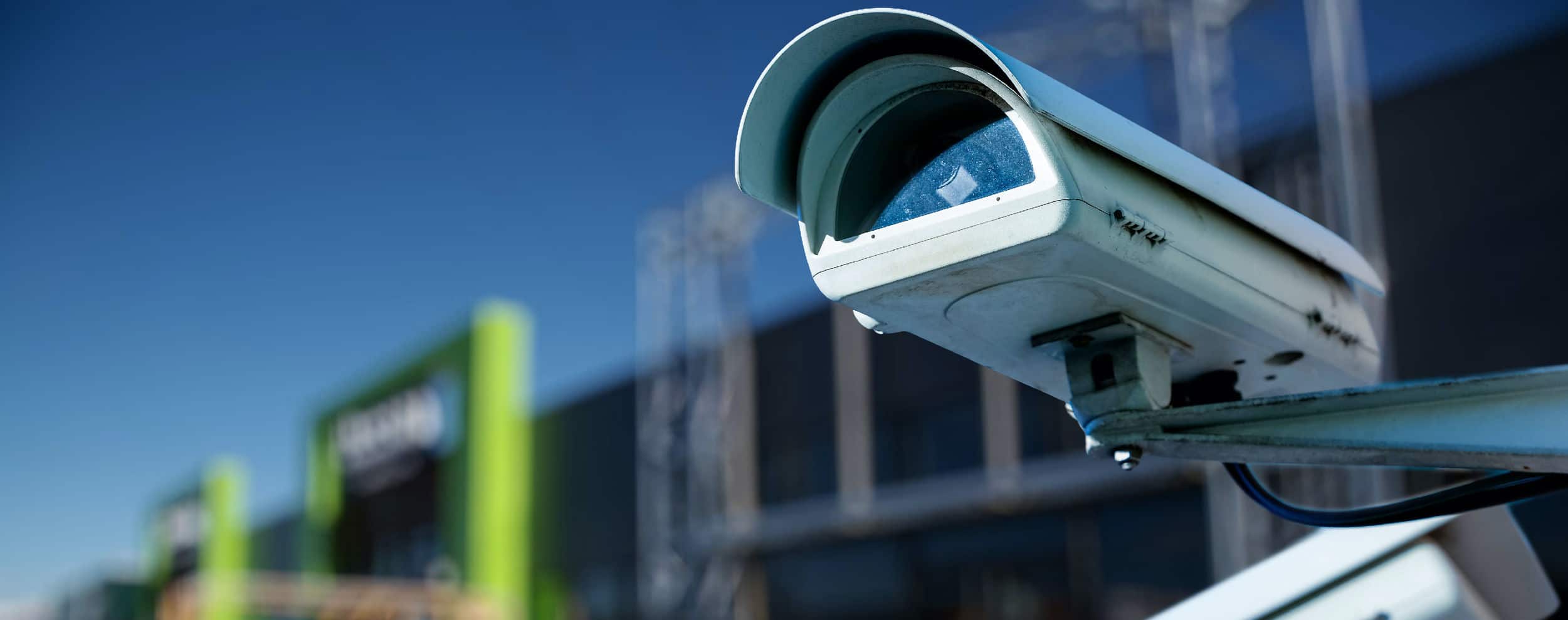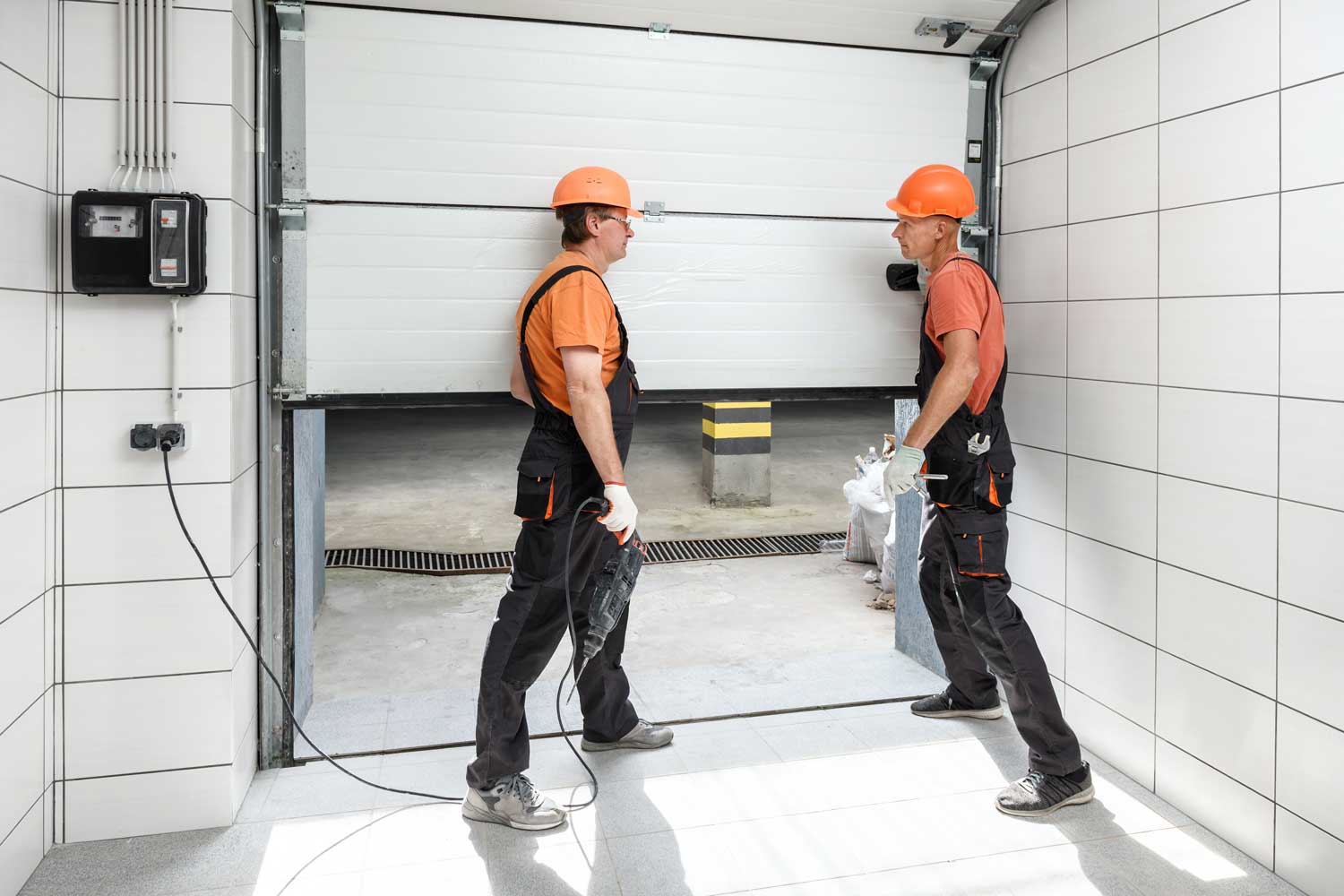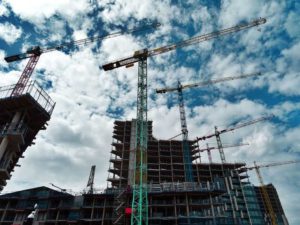The State of Construction Site Security in 2023
In 2025, construction site security remains a critical concern as theft and vandalism continue to significantly impact the industry. According to recent data, over 11,000 incidents of construction equipment theft occur annually, with only 21% of stolen equipment ever recovered. These thefts result in estimated losses ranging from $300 million to $1 billion annually.
The high value of construction materials, such as copper, aluminum, and lumber, has made them prime targets for thieves. The scarcity and price spikes of these materials have heightened incentives for theft, leading to more audacious criminal activities. The construction industry faces up to $1 billion in annual losses due to theft, with copper theft alone accounting for a significant portion of this figure.
Internal threats also pose a significant risk to construction site security. Studies indicate that anywhere from 30% to 85% of job site theft results from individuals authorized to be on-site. This statistic includes the theft of small tools, heavy equipment, and large volumes of materials.
Recent incidents highlight the vulnerabilities in construction site security:
-
In August 2022, heavy construction equipment was stolen in Los Angeles and sold as refurbished. Thieves targeted unsecured construction sites and heavy equipment rental shops in Los Angeles, stealing machinery such as backhoes and excavators. The stolen equipment was sold as refurbished products. In one case, police recovered approximately $5 million of stolen equipment from a warehouse in the City of Commerce. The equipment had altered serial numbers and was resold through online marketplaces.
-
In July 2024, authorities in Howard County, Maryland, uncovered a large-scale theft operation involving over 15,000 stolen construction tools valued between $3 million and $5 million. The stolen items, ranging from hand tools to heavy machinery and construction materials, were linked to thefts across multiple states, including Maryland, Virginia, and Pennsylvania. The investigation highlighted the growing issue of organized crime targeting construction sites and underscored the need for enhanced security measures.
-
In January 2025, construction site vandalism in Greenville, North Carolina, caused $18,000 in damages. A group of individuals trespassed onto the site on East 5th Street between Cotanche and Evans Streets, causing approximately $18,000 in damages. The suspects, reportedly intoxicated college students, damaged concrete and delayed the project's progress. The Greenville Police Department is actively investigating the incident and seeking information from the public.
Developing a Construction Site Security Plan
You can’t protect what you haven’t planned for. Construction sites face unique risks, from internal theft and trespassing to equipment vandalism and material loss. Without a structured security strategy, even minor breaches can become major financial setbacks. Developing a construction site security plan gives you a clear framework to identify vulnerabilities, prioritize protection, and implement the right safeguards. It’s not just about locking things up; it’s about knowing what’s worth protecting, who has access, and how to respond when something goes wrong.
Mitigating the Risks with Better Construction Site Security
Identifying potential risks can help construction site managers develop a comprehensive security plan that addresses all possible threats. Some common construction site security risks include:
-
Theft: Construction sites often contain valuable equipment and materials, making them attractive targets for theft.
-
Vandalism: Vandals sometimes target construction sites. These criminals may damage equipment or materials. Even one incident can cause delays and additional costs.
-
Sabotage: Incapacitating equipment or a job site is a more severe security risk. Sabotaging equipment can cause significant harm to people and project timelines.
-
Accidents: Workplace injury frequently occurs on construction sites. Accidents lead to injuries or fatalities. Proper safety measures can minimize the risk and lower costs.
-
Unauthorized access: Trespassing on the construction site leads to security breaches, theft, and even injury.
All these incidents are preventable. Yet the industry continues to struggle with construction site security. Common problems include:
-
No systems for identifying and tracking small equipment and tools.
-
Several equipment resources share the same key.
-
No or not enough fencing or lighting to secure the site.
-
Open cabs in heavy equipment.
-
No GPS tags tracking heavy equipment.
-
Inconsistent access control policies, allowing unauthorized visitors to slip in without verification.
-
Lack of remote monitoring capabilities, making overnight and weekend coverage weak or nonexistent.
-
Poor signage, which fails to clearly mark restricted areas or warn of surveillance.
-
No centralized log of who enters and exits the site each day.
-
Delayed response protocols when an alarm is triggered or suspicious activity is detected.
-
Poor job site security presence.
-
Failing to leverage the right type or number of cameras for construction sites.
If your construction site security plan checks any of these boxes, your company has preventable risks.
Construction Site Security Systems
Once you know your risks, the next step is choosing the right tools to control them. Construction site security systems form the backbone of any effective protection strategy, but not all systems are created equal. Each component plays a specific role in keeping your site secure, from fencing and access control to surveillance cameras and alarms. The key is to match the solution to the threat. Whether you’re dealing with equipment theft, vandalism, or unauthorized entry, the right combination of security systems can deter criminals, catch intruders, and minimize losses before they happen.
Construction Site Security Systems Fence
When it comes to security on construction sites, you have options. However, determining which construction site security measures to employ can be a challenge. Once you’ve identified the potential security risk, it’s crucial to implement the appropriate approach to mitigate these dangers.
Here are some of the most widely accepted techniques for securing a construction site:
-
Perimeter fencing: A perimeter fence prevents unauthorized access to the construction site. A sturdy fence with a locking gate can help keep intruders out.
-
Access control: Access control measures, such as identification badges or security guards, are essential for construction site security. These techniques can help ensure that only authorized personnel can access the construction site.
-
Security cameras: Security cameras for construction sites can effectively deter theft and vandalism. These tools can also provide valuable evidence in a security breach.
-
Alarm systems: Alarm systems can detect intruders and alert security personnel, providing an immediate response to security threats.
-
Lighting: Adequate lighting can help deter intruders and make it easier to detect security breaches.
-
Secure storage: To prevent theft, valuable equipment and materials should be stored in secure, locked containers or buildings.
-
Signage: Clearly posted signs serve as a low-cost but high-impact deterrent. Warnings such as “24/7 Video Surveillance,” “No Trespassing,” or “Authorized Personnel Only” let potential intruders know the site is actively monitored. Signs can also reinforce safety protocols for workers and visitors. Effective signage should be placed at every entry point and around the site perimeter to reduce liability and make enforcement efforts easier.
Construction site crime correlates with rising construction costs. That makes it even more important to maintain the best security practices possible. Ultimately, construction site security systems can pay for themselves. But only if you use these tools wisely.
Best Practices for Construction Site Security
In addition to implementing essential security measures, there are several best practices that construction site managers can follow to ensure the safety and security of their construction site:
-
Conduct regular security audits: Regular audits can help identify potential security risks and ensure that all security measures work effectively.
-
Train employees on security protocols: All employees should receive training on security protocols and be aware of the potential security risks on the construction site.
-
Perform background checks: All employees and contractors should undergo background checks. The goal is to ensure that potential hire does not have a history of theft or other criminal activity.
-
Use GPS tracking: GPS tracking can spot the location of valuable equipment. GPS tags make it easier to recover stolen items.
-
Implement a visitor log: A visitor log can help track who enters and exits the construction site. Identifying unauthorized individuals lessens the risk of trespassers.
-
Remove unnecessary equipment and materials: Unused equipment and materials should be removed from the construction site or otherwise secured. Keeping these assets onsite increases theft risk.
Security on construction sites starts with your employees. All Business suggests creating a security culture at each job site to include honest communication and employee awareness. It’s certainly true that job site security impacts employees as much as it does the employer. High company costs often lower our ability to pay better wages. Employee theft can create a climate of distrust between managers and employees.
Companies should educate staff on the importance of construction site security. Employees should understand the measures you’ve taken to keep the job site and employees safe. The workforce should receive training on how to identify suspicious activity and where to report it. They should also understand their responsibilities for securing large and small equipment when not in use.
How to Effectively Use Construction Site Security Monitoring
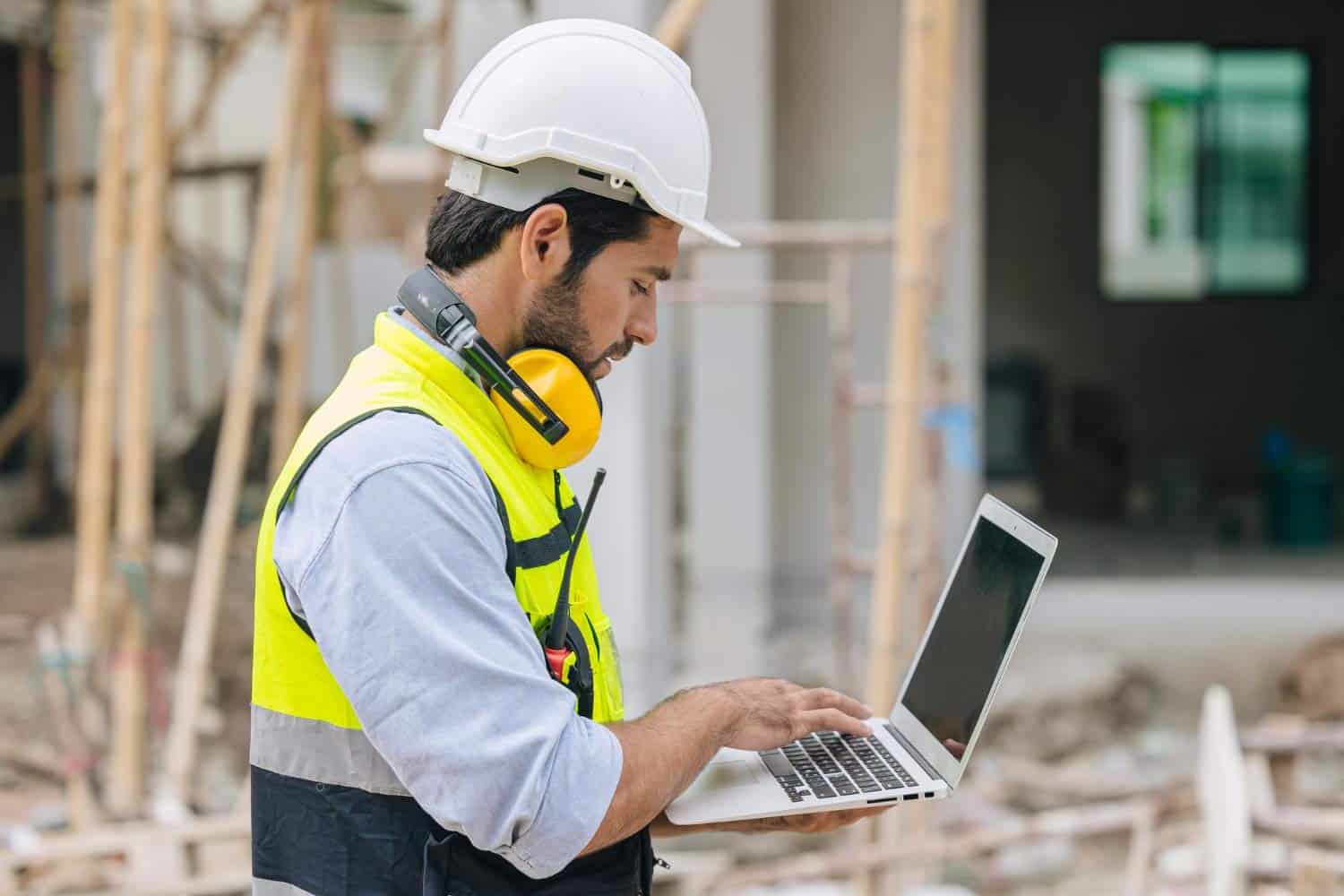
Installing cameras isn’t enough; you must use them strategically. Construction site security monitoring is most effective when it’s proactive, not reactive. That means knowing which areas are most vulnerable, choosing the right mix of technology, and ensuring real-time visibility across the site. Whether using remote guards, motion sensors, or smart surveillance with AI analytics, monitoring only works if it’s part of a broader plan. The goal isn’t just to watch; it’s to catch threats early, respond fast, and keep your projects moving without costly interruptions.
Construction Site Security Monitoring
Construction site security monitoring is essential to ensure safety and avoid crime. This type of monitoring involves using security cameras, sensors, and other equipment to monitor a site. These tools alert security personnel during an intrusion or other security breach.
-
Determine the locations that need to be monitored: The first step in using construction site security monitoring is to determine the areas that need watching. It is important to identify the areas that are most vulnerable to theft or vandalism. Then you can install the appropriate equipment to fill these security gaps. This targeting should include site access points, storage areas, and equipment.
-
Install the appropriate security equipment: The next logical question is: What is the most appropriate security equipment for my construction site? The options include security cameras, sensors, alarms, and fencing, as well as guards. When choosing these tools, the cameras should be strategically placed to cover all areas that need monitoring. Sensors should be placed in locations where an intruder is likely to pass through, such as near the access points or storage areas. Alarms can alert security personnel in the event of an intrusion.
-
Ensure that the security equipment is working properly: Once the security equipment has been installed, it is important to ensure that it is working correctly. This includes testing the cameras, sensors, and alarms to ensure that they are functioning correctly. Regular maintenance and inspections should be conducted to ensure that the equipment is in good working order.
-
Monitor your construction site security equipment: The worst possible outcome is to lack the construction site security you need. The second is to invest in construction security systems that fail to work when you need them. Security equipment should be monitored regularly to improve the effectiveness of the entire system. Testing can be done by on-site security personnel or by a remote central monitoring system. The monitoring should be done in real-time so that any security breaches can be detected and responded to immediately with no gaps in coverage.
-
Respond quickly to security breaches: For obvious reasons, it is critical to respond quickly and appropriately to any security incidents. This may involve contacting the police or security personnel, depending on the severity of the breach. It is also important to have a plan in place for responding to security breaches. This plan should include procedures for evacuating the site if necessary.
-
Keep records: Train your staff to log all security breaches and responses. This due diligence includes saving video surveillance footage from your camera feed. Recorded information should include the breach's date and time, location, and response. Capturing this information can help to identify patterns and trends in security breaches to improve construction site safety.
-
Review and update security measures regularly: We can’t say this enough: Construction site security is a living, breathing effort. All security measures should be reviewed and updated regularly to ensure that they stay effective. This effort may include upgrading security equipment or changing procedures. Regular reviews can help to identify weaknesses in the security system and can help to ensure that the site remains secure.
Modern construction site security cameras allow companies to monitor their job site without hiring expensive onsite guards. Today’s video surveillance tools offer remote monitoring via a cellular or internet connection. Connectivity can even occur if the job site lacks electricity. These tools provide alarms and sensor technology. Plus, security cameras for construction sites have powerful analytics that spot trends while storing data in the cloud.
Recent Advances in Construction Site Security
With increasing thefts and vandalism in these project locations, construction site security cameras have become necessary tools for protecting assets, equipment, and personnel. Recently, there have been significant upgrades to video surveillance. These innovations make security cameras for construction sites even more effective and efficient in deterring crime and ensuring safety. Some of the latest security camera updates include:
-
High-definition cameras: HD cameras are more affordable and accessible now. The grainy, hard-to-see images on traditional CCTV cameras are outdated and need to be replaced for better construction site security. Today’s HD cameras allow construction sites to capture high-quality footage of the site and surrounding areas. The higher resolution of these cameras makes it easier to identify individuals and vehicles. These tools provide clear evidence in the event of an incident. The cameras can also monitor the progress of the construction project, which can be useful for project management and productivity tracking in addition to security.
-
Remote access: One of the most significant upgrades to video surveillance for construction sites is the ability to access footage remotely. Construction managers and security personnel can monitor the site from anywhere with a smartphone or computer. Remote access also allows for real-time alerts, be sent to a mobile device in the event of an intrusion or other security breach.
-
Motion detection: Motion detection is another recent upgrade to security cameras for construction sites. This technology triggers cameras to start recording when motion is detected. This feature can help conserve storage space on the video recorder and provide a more focused view of the site when motion is detected in a specific area.
-
Audible and visual alerts: A well-placed camera in a vulnerable location can sound an alarm and flash bright lights at an intruder. These cameras even allow live verbal communication between two parties.
-
Cloud storage: Storing video footage in the cloud is an increasingly popular option for construction site security monitoring. With cloud storage, the footage is stored remotely on a server rather than onsite. Storing your video feed in the cloud provides added security, as the footage is not vulnerable to construction site theft or vandalism. Cloud storage also makes accessing footage remotely from any internet-connected device easier.
-
Facial recognition: The latest artificial intelligence (AI) software includes facial recognition technology. While this software is evolving, it has promising benefits for construction site security monitoring. Facial recognition technology can identify individuals based on their features. The technology can help with job site access control or to identify potential intruders. Facial recognition technology is still relatively new and has some privacy concerns, but it can still be useful for enhancing security on construction sites.
-
Thermal imaging: Night vision technology has become increasingly popular in security cameras for construction sites. This technology uses infrared radiation to detect heat signatures and can be used to identify potential intruders, even in complete darkness. Thermal imaging can also monitor the temperature of equipment and machinery, which can help to identify potential issues before they become significant problems.
-
Advanced AI-powered analytics: AI analytics are now common in modern surveillance systems for construction sites. These advanced analytics can analyze footage and identify potential security breaches or safety hazards. For example, AI can detect workers not wearing safety gear or identify vehicles that do not belong on the construction site. Analytics tools can spot patterns that could lead to criminal activity, such as the same suspicious car repeatedly driving by a perimeter fence after hours.
-
Virtual Security Guards: One of the most valuable advancements in construction site protection is the rise of virtual guarding services. These remote security professionals monitor live video feeds in real-time from a central command center, providing human oversight without needing to be physically present onsite. Virtual guards can immediately verify threats, issue audio warnings through speaker systems, and call local law enforcement when necessary—often before a break-in or theft occurs.
This approach cuts costs compared to onsite guards while easily scaling across as many locations as you need. If your construction project spans several sites or phases, virtual security guards can oversee them all from a single monitoring hub. They can also handle off-hours coverage when physical personnel aren’t available, ensuring 24/7 eyes on your assets. Virtual guarding is especially effective when paired with motion-activated cameras, floodlights, and alarm triggers as part of a layered security strategy.
Security cameras don’t need access to electricity, making them perfect for an ever-changing construction site. Before selecting a system, just make sure the cameras have one of the two features listed below:
-
Battery-powered video surveillance: One option is to use battery-powered cameras designed to run on batteries for an extended time. These cameras typically use rechargeable batteries fueled by solar panels or other types of chargers.
-
Solar-powered cameras: Another option is to use solar-powered cameras designed to capture and store energy from the sun to power the camera. These cameras typically come with solar panels that can be installed on or near the camera to capture sunlight. Some units are even portable, allowing their solar panels to follow the sun and maximize power.
Even if your construction site doesn’t have Wi-Fi, there are a few ways security cameras for construction sites can connect to the internet:
-
Ethernet Cable: The camera can be connected to your router or modem using an Ethernet cable. This functionality will allow the camera to transmit data to the internet through the cable.
-
Cellular Network: Some cameras have built-in 4G and 5G adapters that allow them to connect to the internet through a cellular network. This option may require a data plan or SIM card.
-
Powerline Adapters: Powerline adapters can transmit data over the electrical wiring in your home or building. You can connect the camera to a powerline adapter, transmitting the data to your router or modem.
While Wi-Fi is the most common and convenient method of connecting a video surveillance camera to the internet, these other options can provide connectivity in situations where Wi-Fi is not available or reliable.
It’s important to note that the type of camera you choose will depend on the specific needs of your construction site and the level of security you require. Additionally, you may need to consider the cameras’ cost and the additional equipment required to power them when making your decision.
Pro-Vigil for Advanced, Effective Construction Site Security
Construction site security monitoring is essential for ensuring the safety and security of a construction site. By following these tips, construction site managers can effectively use security monitoring to prevent theft, vandalism, and unauthorized access to the site. It is important to work with a professional security company to design and implement a security plan that meets the site’s specific needs. Regular monitoring and review can ensure that the security measures remain effective and current.
At Pro-Vigil, we don’t believe in one-size-fits-all solutions. Every job site has its layout, risk profile, and operating hours—your security strategy should reflect that. We offer tailored site assessments that identify your blind spots, assess lighting and perimeter control, and recommend scalable surveillance options that grow with your project. Whether protecting a single property or managing multiple sites across different regions, our team helps you standardize security operations while customizing protection where it counts.
Our mobile surveillance units give you flexibility. These solar-powered, high-definition camera towers come equipped with motion detection, audio deterrents, and 24/7 remote monitoring, so you don’t need to install permanent infrastructure or rely solely on onsite guards. Suppose you already have construction site security equipment. In that case, we can integrate with your existing systems, enhance your coverage, and take over monitoring so your team can stay focused on the build.
Pro-Vigil doesn’t just detect threats—we help you respond. Our remote security professionals are trained to verify alerts in real-time and escalate issues immediately. If an intruder is spotted, we intervene using audible warnings and contact local law enforcement when necessary. This proactive approach stops incidents before they escalate and often prevents loss entirely.
Pro-Vigil is the nation’s leader in construction site security. We specialize in designing, implementing, and monitoring essential construction site security systems. From perimeter protection to real-time video verification, we deliver end-to-end service that reduces risk, deters criminal activity, and saves money.
If you’re worried about how to secure a construction site, call us. We can help protect what you’ve worked hard to build.
Q&A
Artificial intelligence has rapidly advanced construction site security by automating threat detection and reducing false alarms. AI-powered systems can distinguish between a raccoon wandering across the site and a person attempting to steal equipment. These tools also analyze behavioral patterns, such as a truck circling the site repeatedly or someone loitering near a gate after hours, and alert security teams before an incident occurs. AI even helps streamline operations by identifying inefficient workflows or non-compliant safety practices caught on camera. In a 2025 study, AI in video surveillance will grow from $4.1 billion in 2020 to $9.7 billion by 2026, proving its value across industries, including construction and industrial applications.
Cost-effective construction site security doesn’t have to mean sacrificing protection. Companies can start by identifying their highest-risk assets and locations and applying targeted solutions like solar-powered surveillance cameras or mobile monitoring towers. Renting security systems rather than purchasing them outright can also reduce upfront costs. Additionally, leveraging remote guards instead of onsite security can save 40% or more on labor expenses. According to the National Equipment Register (NER), construction companies lose up to $1 billion annually to theft, making even a modest investment in security a smart cost-avoidance strategy. Layered defenses combining fencing, signage, lights, cameras, and AI monitoring deliver scalable security that aligns with budget and risk levels.

